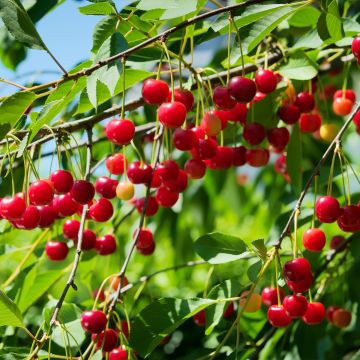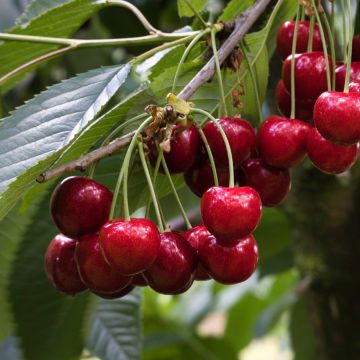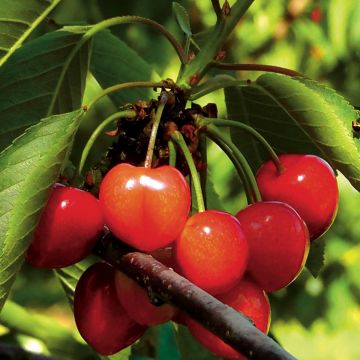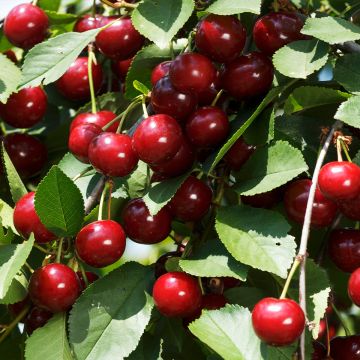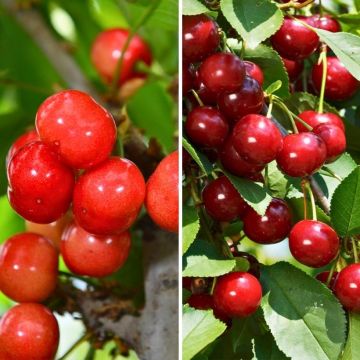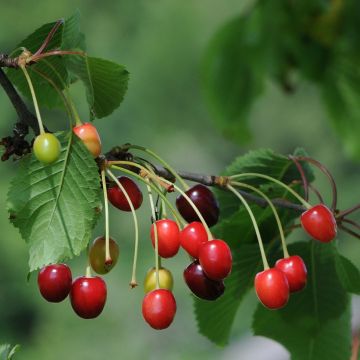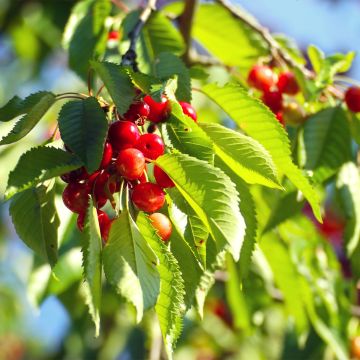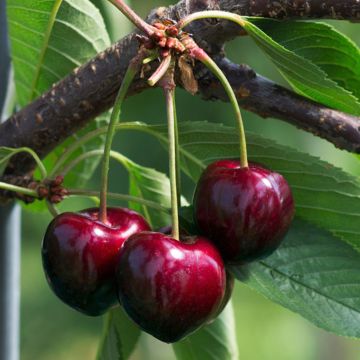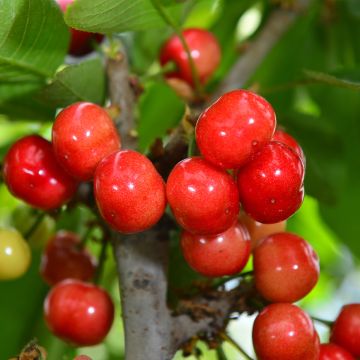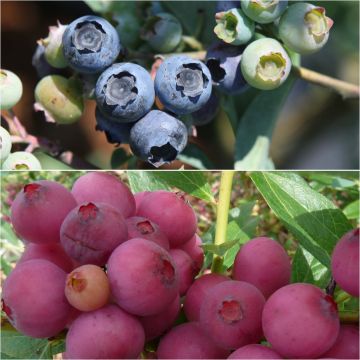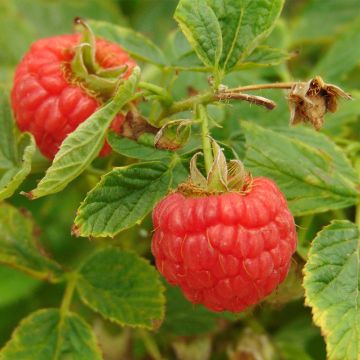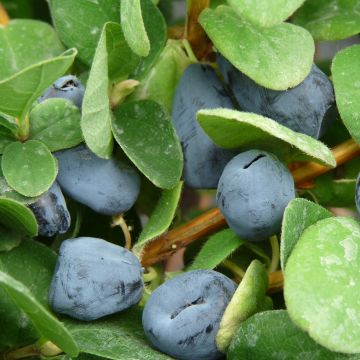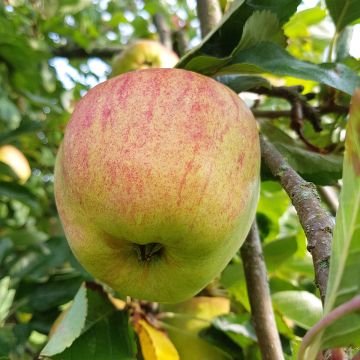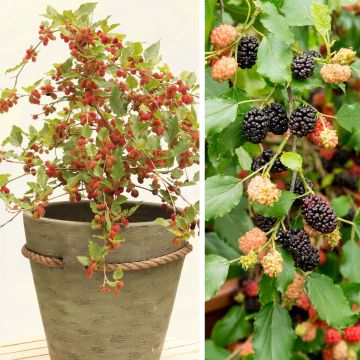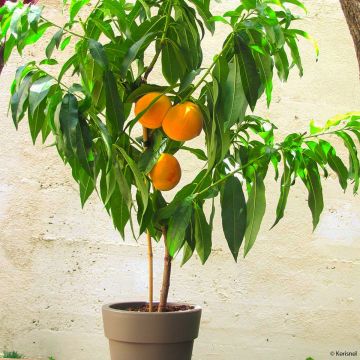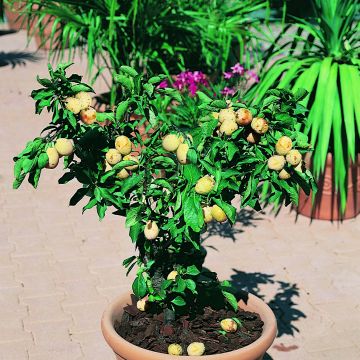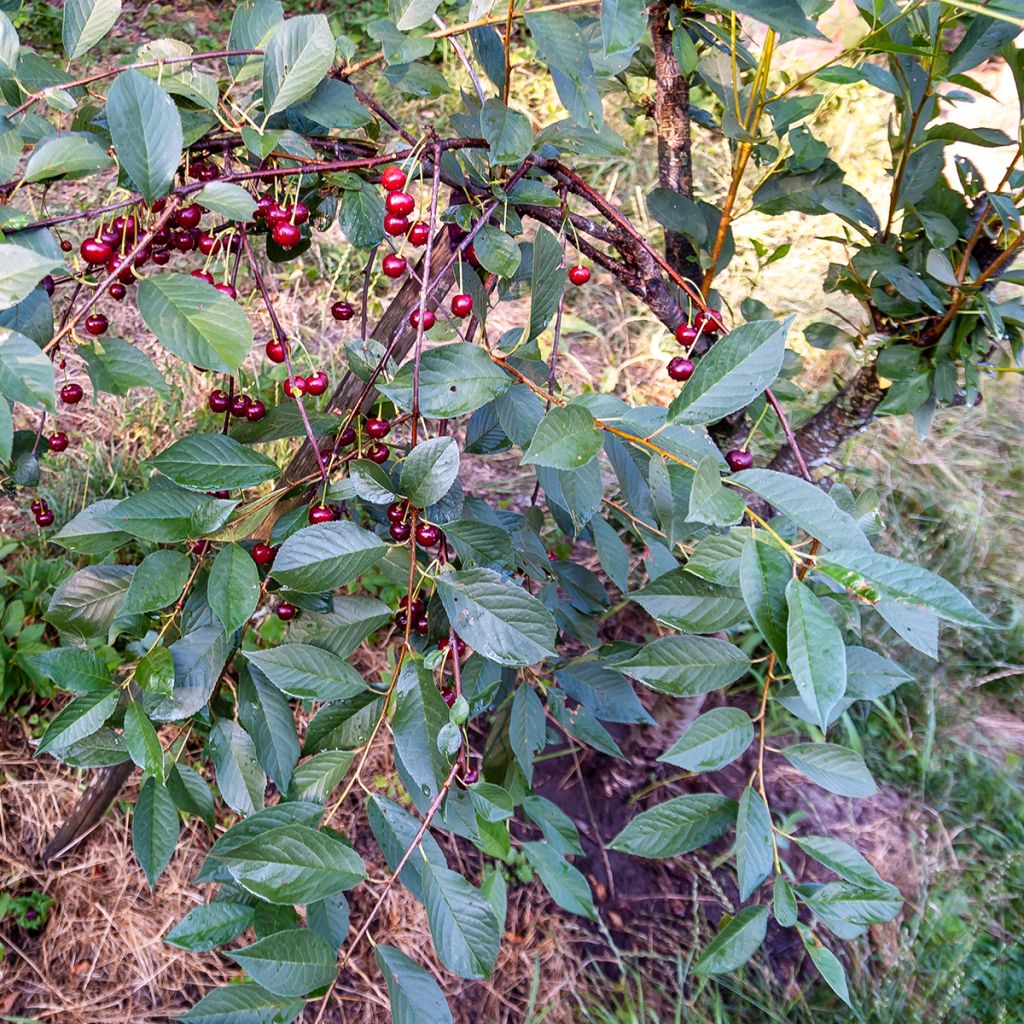

Prunus avium Piemont - Wild Cherry
Prunus avium Piemont - Wild Cherry
Prunus avium Piemont
Wild Cherry, Sweet Cherry, Mazzard
A little disappointed when it arrived, it consisted of two low opposite branches, not the majestic appearance, albeit reduced, shown in the photo. Above all, it attracted a lot of aphids all summer despite my care, which makes me think it was poorly fed before coming to my place. As a result, the few cherries it tried to produce did not come to fruition.
voun, 21/01/2025
This item cannot be shipped to the selected country
Delivery charge from €5.90
More information
Schedule delivery date,
and select date in basket
This plant carries a 6 months recovery warranty
More information
We guarantee the quality of our plants for a full growing cycle, and will replace at our expense any plant that fails to recover under normal climatic and planting conditions.
From €5.90 for pickup delivery and €6.90 for home delivery
Express home delivery from €8.90.
Description
The Piemont Dwarf Cherry Tree combines many qualities. In spring, it adorns itself with a beautiful white flowering, both decorative and useful for bees. These flowers then evolve into beautiful bright red cherries, good for harvesting in June-July. Sweet and slightly acidic, fragrant and reasonably firm, they make delicious summer desserts or appetizing jams. Very hardy, this Cherry Tree will find its place on any balcony or terrace, in a sunny location, thanks to its compact dimensions. Self-fertile, it will produce fruit without requiring another nearby tree. It can also be planted in the garden to provide beautiful harvests for the whole family.
Prunus avium, commonly known as Wild Cherry or Bird Cherry, belongs to the large family of Rosaceae, which gives us most of our fruit trees (Pear trees, Apple trees, Peach trees, Plum trees...), numerous ornamental plants (Rose, Serviceberry, Cinquefoil...) as well as wild plants. It is native to Europe since the Neolithic period (New Stone Age), Western Asia and North Africa. A long-time companion of the human species, the Wild Cherry has been cultivated for its fruit since the 4th century BC.
The 'Piemont' mini-Cherry Tree enriches the palette of dwarf fruit trees. This miniature tree rarely exceeds 1.80m (6ft) in height and 1.10m (4ft) in width. Its moderately spreading habit, with a more or less oval shape, gives it an elegant silhouette. Cultivated in a pot, it requires little space to thrive, making it a perfect plant for living spaces such as balconies, terraces or patios. Its deciduous foliage is composed of alternate, obovate and toothed leaves, measuring 5 to 6cm (2in) in length. With a beautiful bright green colour, the leaves are numerous and form a dense vegetation. The semi-late flowering occurs between March and mid-April, before the appearance of leaves, which can expose it to late spring frosts. The pure white flowers, single, measuring 2 to 3cm (1in) in diameter, are grouped in clusters. They can be destroyed by frost from -2 to -3 °C (28.4 to 26.6°F), so it is recommended to plant cherry trees in a sheltered location, facing west and protected from cold winds in regions that experience late frosts. Very decorative in spring, the flowers of this self-fertile variety do not need to be pollinated by another variety planted nearby. However, if this is the case, it tends to improve fruit production quantitatively. It is also a useful plant for bees that will come to collect its nectar.
The fertilized flowers evolve into medium-sized cherries, about 2cm (1in) in diameter. When ripe in June-July, they turn a beautiful bright red, with a very attractive shiny surface. Fragrant, they have a moderately firm flesh, slightly juicy, sweet and slightly acidic at the same time. They can be consumed fresh, or used to make juice or jam to enjoy later in the year. This variety has good productivity and will give you beautiful harvests despite the limited size of your tree.
This hardy tree, which can tolerate temperatures around -20 °C (-4°F), is suitable for cultivation in all regions of France. It should be given a sunny location, possibly partially shaded in the hot southern regions. In the ground, it accepts most fertile, well-drained but moist soils. When grown in a pot, it will need regular watering, allowing the substrate to dry out between waterings.
The 'Piemont' Dwarf Cherry Tree offers the joy of harvesting your own fruit even without a garden. Dwarf fruit trees are among those pleasure plants that allow you to create a comforting green cocoon even on a simple balcony. If you have a slightly larger terrace or patio, you can create a mini-orchard with other lilliputian fruit trees like the Peach Tree Dwarf Fruit Me Peach Me Yellow. With its long, beautiful green leaves and orange fruits, this miniature tree is just as pleasing to the eye as to the palate. The 'Red Sensation' Columnar Apple Tree will delight you with its beautiful red fruits in late September, and if you prefer pears, the 'Garden Gem' Dwarf Pear Tree will charm you with its yellow fruits turning red, with a melting and sweet flesh.
Report an error about the product description
Prunus avium Piemont - Wild Cherry in pictures
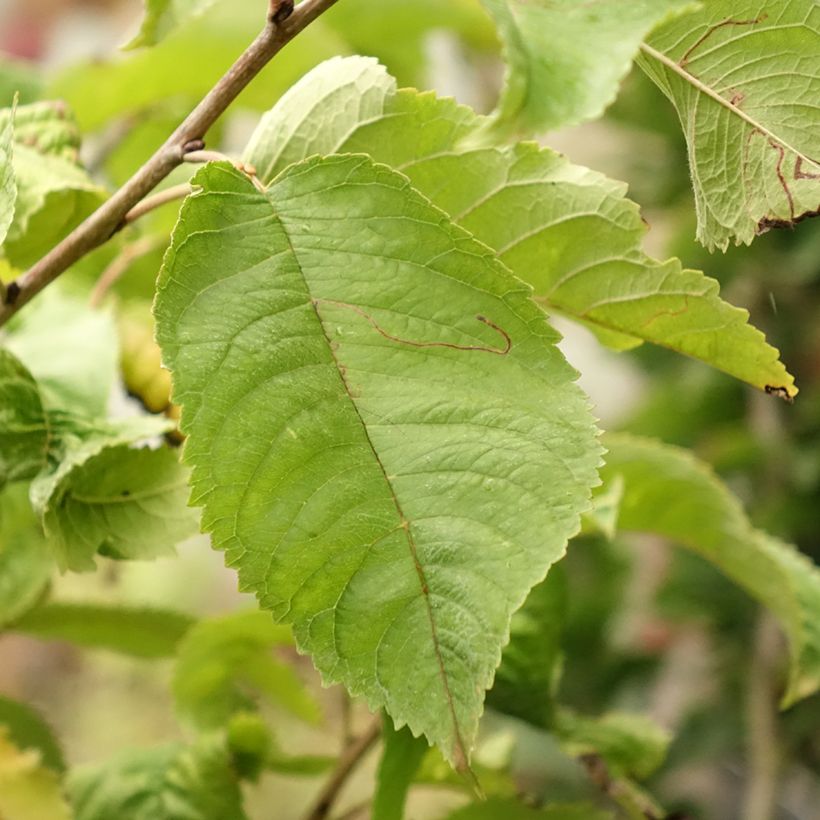

Plant habit
Fruit
Flowering
Foliage
Botanical data
Prunus
avium
Piemont
Rosaceae
Wild Cherry, Sweet Cherry, Mazzard
Cultivar or hybrid
Other Cherry trees
Planting and care
Easy to grow, the 'Piemont' Cherry tree grows in all types of soil, neutral, slightly acidic or slightly calcareous. It appreciates fresh, light soils and fears heavy and clayey soils. Choose a sunny location, or possibly slightly shaded in the south. In order to limit the risks of late frost on the flowers, it is recommended to plant the Cherry tree in a sheltered position, facing west and protected from cold winds in regions that experience spring frosts. Planting is preferably done in autumn or alternatively in winter, outside the freezing period. If you plant several trees, space them 2 to 3 metres (7 to 10 feet) apart for dwarf varieties.
Loosen the soil deeply, remove rocks and unwanted weeds. Add some coarse sand to improve drainage. Dig a hole 4 to 5 times the volume of the root ball. Make sure to separate the bottom soil from the top soil. Mix crushed horn or well-rotted compost or potting soil with the bottom soil and pour this mixture into the planting hole. Install a stake. Place the root ball, cover with the top soil and pack it down well. Water generously (about 10 litres). Position your tie system, crossing it in the shape of an 8, so that the trunk and stake do not rub against each other.
During cultivation, watering is not necessary except in case of high temperatures. Mulch at the base to keep it cool in summer. Protect your harvest by installing, either an anti-bird net, aluminum foil or old CDs.
For pot planting : install a layer of gravel or clay pebbles at the bottom of the pot to facilitate drainage. Add a layer of soil and then place the plant so that the top of the root ball is slightly below the top of your pot, and fill in around it with a mixture of 2/3 garden soil and 1/3 potting soil or well-rotted compost. Every spring, remove the top layer and replace it with fresh potting soil. Water regularly and moderately. In late autumn, protect the pot with insulation before winter frosts.
The cherry tree can be subject to various diseases and pests. To combat grey mold (velvety rot on fruits) and brown rot (wilting of flowers and rotting of fruits on the tree), remove and burn affected parts curatively, and as a preventive measure, spray Bordeaux mixture or decoctions of horsetail or garlic in early spring and autumn. Against bacterial canker (wilting of floral clusters, brown spots, bark deformation), spray Bordeaux mixture. As for pests, the cherry fly or fruit worm can be controlled preventively by installing yellow cardboard discs covered with glue in spring, or pheromone traps (male insect trapping), or a Drosophila trap, which is easy to make from a plastic bottle. In case of black aphid attack, spray a mixture of water and black soap or water and vegetable oil.
Planting period
Intended location
Care
-
, onOrder confirmed
Reply from on Promesse de fleurs
Fruit trees for small gardens
Haven't found what you were looking for?
Hardiness is the lowest winter temperature a plant can endure without suffering serious damage or even dying. However, hardiness is affected by location (a sheltered area, such as a patio), protection (winter cover) and soil type (hardiness is improved by well-drained soil).

Photo Sharing Terms & Conditions
In order to encourage gardeners to interact and share their experiences, Promesse de fleurs offers various media enabling content to be uploaded onto its Site - in particular via the ‘Photo sharing’ module.
The User agrees to refrain from:
- Posting any content that is illegal, prejudicial, insulting, racist, inciteful to hatred, revisionist, contrary to public decency, that infringes on privacy or on the privacy rights of third parties, in particular the publicity rights of persons and goods, intellectual property rights, or the right to privacy.
- Submitting content on behalf of a third party;
- Impersonate the identity of a third party and/or publish any personal information about a third party;
In general, the User undertakes to refrain from any unethical behaviour.
All Content (in particular text, comments, files, images, photos, videos, creative works, etc.), which may be subject to property or intellectual property rights, image or other private rights, shall remain the property of the User, subject to the limited rights granted by the terms of the licence granted by Promesse de fleurs as stated below. Users are at liberty to publish or not to publish such Content on the Site, notably via the ‘Photo Sharing’ facility, and accept that this Content shall be made public and freely accessible, notably on the Internet.
Users further acknowledge, undertake to have ,and guarantee that they hold all necessary rights and permissions to publish such material on the Site, in particular with regard to the legislation in force pertaining to any privacy, property, intellectual property, image, or contractual rights, or rights of any other nature. By publishing such Content on the Site, Users acknowledge accepting full liability as publishers of the Content within the meaning of the law, and grant Promesse de fleurs, free of charge, an inclusive, worldwide licence for the said Content for the entire duration of its publication, including all reproduction, representation, up/downloading, displaying, performing, transmission, and storage rights.
Users also grant permission for their name to be linked to the Content and accept that this link may not always be made available.
By engaging in posting material, Users consent to their Content becoming automatically accessible on the Internet, in particular on other sites and/or blogs and/or web pages of the Promesse de fleurs site, including in particular social pages and the Promesse de fleurs catalogue.
Users may secure the removal of entrusted content free of charge by issuing a simple request via our contact form.
The flowering period indicated on our website applies to countries and regions located in USDA zone 8 (France, the United Kingdom, Ireland, the Netherlands, etc.)
It will vary according to where you live:
- In zones 9 to 10 (Italy, Spain, Greece, etc.), flowering will occur about 2 to 4 weeks earlier.
- In zones 6 to 7 (Germany, Poland, Slovenia, and lower mountainous regions), flowering will be delayed by 2 to 3 weeks.
- In zone 5 (Central Europe, Scandinavia), blooming will be delayed by 3 to 5 weeks.
In temperate climates, pruning of spring-flowering shrubs (forsythia, spireas, etc.) should be done just after flowering.
Pruning of summer-flowering shrubs (Indian Lilac, Perovskia, etc.) can be done in winter or spring.
In cold regions as well as with frost-sensitive plants, avoid pruning too early when severe frosts may still occur.
The planting period indicated on our website applies to countries and regions located in USDA zone 8 (France, United Kingdom, Ireland, Netherlands).
It will vary according to where you live:
- In Mediterranean zones (Marseille, Madrid, Milan, etc.), autumn and winter are the best planting periods.
- In continental zones (Strasbourg, Munich, Vienna, etc.), delay planting by 2 to 3 weeks in spring and bring it forward by 2 to 4 weeks in autumn.
- In mountainous regions (the Alps, Pyrenees, Carpathians, etc.), it is best to plant in late spring (May-June) or late summer (August-September).
The harvesting period indicated on our website applies to countries and regions in USDA zone 8 (France, England, Ireland, the Netherlands).
In colder areas (Scandinavia, Poland, Austria...) fruit and vegetable harvests are likely to be delayed by 3-4 weeks.
In warmer areas (Italy, Spain, Greece, etc.), harvesting will probably take place earlier, depending on weather conditions.
The sowing periods indicated on our website apply to countries and regions within USDA Zone 8 (France, UK, Ireland, Netherlands).
In colder areas (Scandinavia, Poland, Austria...), delay any outdoor sowing by 3-4 weeks, or sow under glass.
In warmer climes (Italy, Spain, Greece, etc.), bring outdoor sowing forward by a few weeks.

































